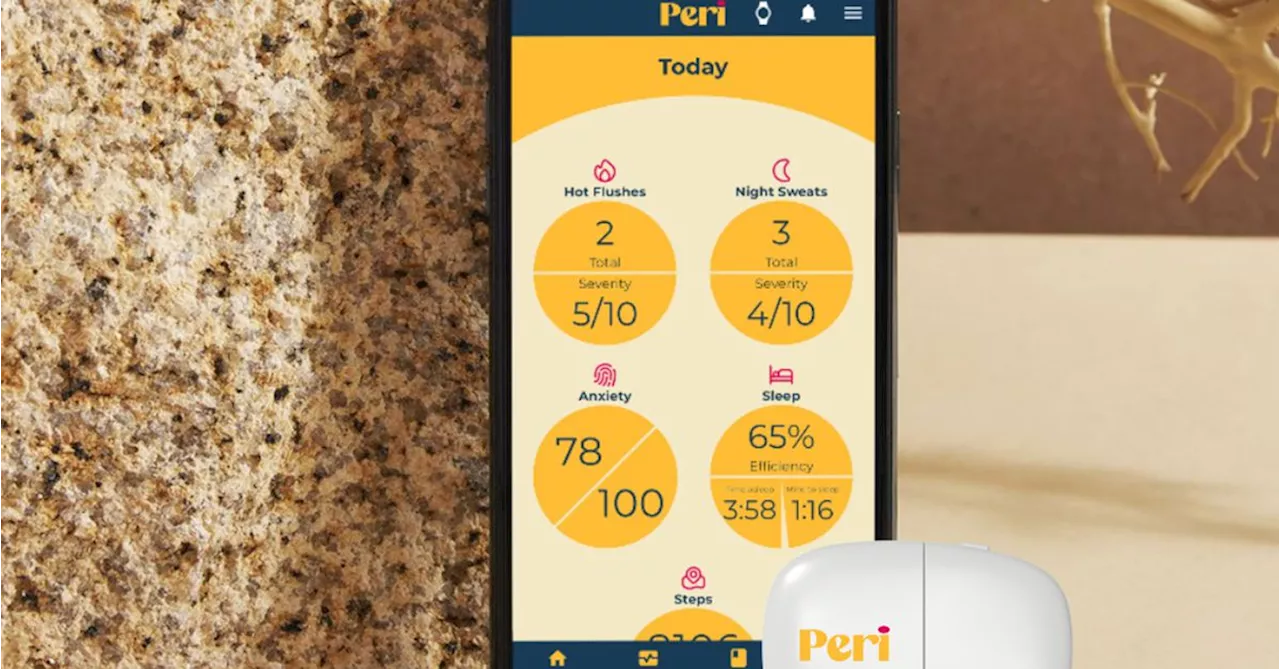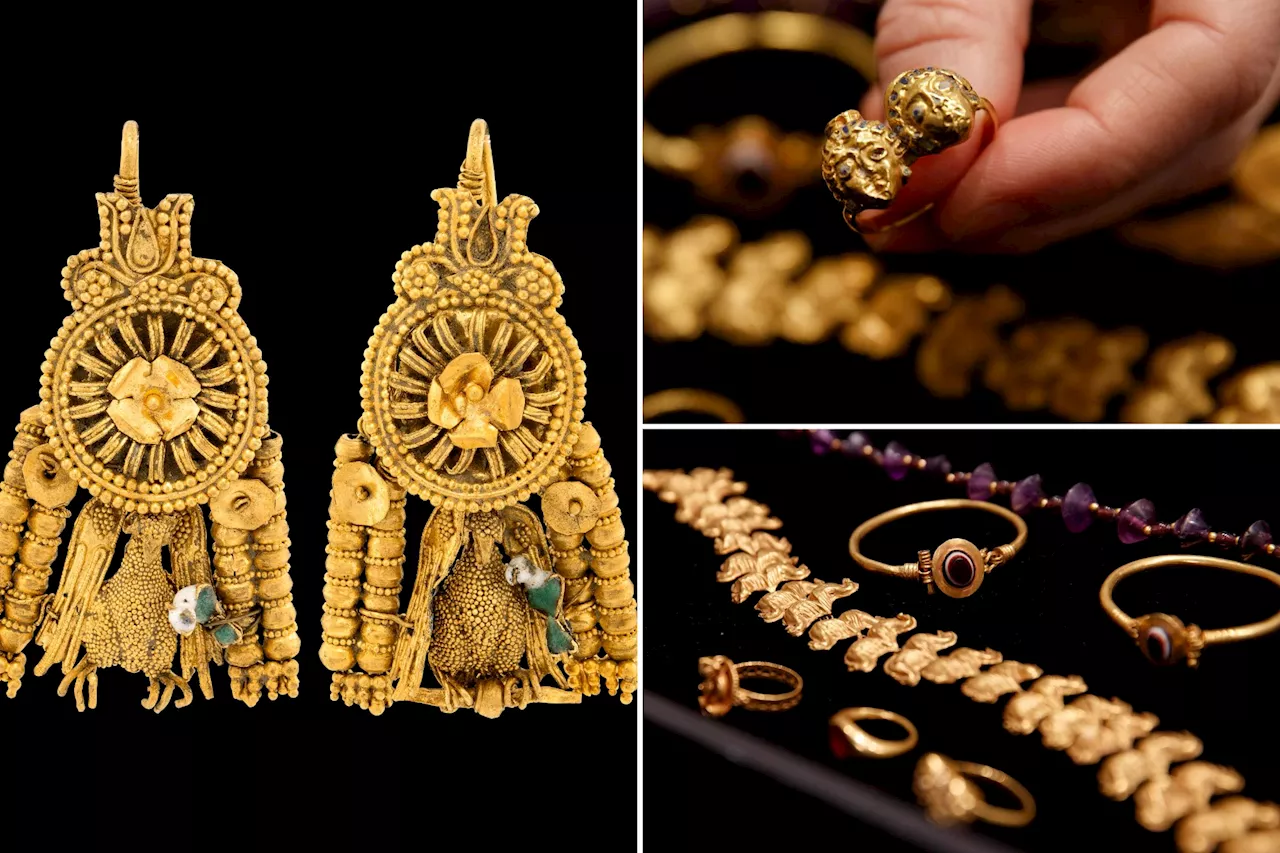Who needs jewelry fit for a queen when you can buy baubles meant for a pharaoh?
Ancient jewelry is up for auction at Christie's on Feb. 4, where buyers can snag a piece of history for less than today's modern fine jewelry.
“I’d much rather have an amethyst necklace with a strong historical presence rather than something else that everyone is going to wear and look the same,” Hannah Fox Solomon, a senior specialist and head of the department of the antiquities at Christie’s, told The Post. “While it’s less than a Bvlgari necklace, this is the best of the best of what we offer,” Solomon said, recalling one client who bought similar beaded necklaces in bulk to hand out to her staff.An amethyst beaded necklace, which dates back to from 1st century B.C. to 1st century A.D., will be available at auction for less than modern luxury jewelry.Two different pairs of earrings are also slated to be auctioned.
The most expensive item to be auctioned, however, is a gold strap necklace from Ancient Greece, which is adorned with pendants resembling beech nuts that are attached along the length of the necklace. The piece is expected to be auctioned for $20,000 to $30,000. When donning ancient pieces, then, she advised wearing the pieces on “a special occasion,” like a gala or dinner with friends, “rather than doing the dishes.”
Lifestyle Auctions Christie's Egypt Exclusive Jewelry
United States Latest News, United States Headlines
Similar News:You can also read news stories similar to this one that we have collected from other news sources.
Canada Rare Earth Secures 70% Stake in Laos Rare Earth RefineryCanada Rare Earth announced it has signed a Memorandum of Understanding with a Laotian company to purchase 70% of a fully permitted rare earth refinery. The refinery, with a capacity of 3,000 tonnes per year, was built 12 years ago but has remained idle due to policy changes. The Lao government is now supporting the refinery's operation and encouraging in-country processing of rare earth concentrates. The refinery is expected to be operational in Q4 2025 after minor refurbishments.
Read more »
 Canada Rare Earth to Acquire 70% Stake in Laos Rare Earth RefineryCanada Rare Earth (TSX.V: LL) has signed a memorandum of understanding to purchase 70% of a fully permitted rare earth refinery in Laos. The refinery, with a production capacity of 3,000 tonnes per year, is expected to be operational by Q4 2025 after modest refurbishments. The company aims to secure offtake agreements and investment to support the refinery's operation and ensure a stable supply of key rare earth oxides.
Canada Rare Earth to Acquire 70% Stake in Laos Rare Earth RefineryCanada Rare Earth (TSX.V: LL) has signed a memorandum of understanding to purchase 70% of a fully permitted rare earth refinery in Laos. The refinery, with a production capacity of 3,000 tonnes per year, is expected to be operational by Q4 2025 after modest refurbishments. The company aims to secure offtake agreements and investment to support the refinery's operation and ensure a stable supply of key rare earth oxides.
Read more »
 Peri: A Wearable Designed to Track Perimenopause SymptomsPeri, a new wearable from startup identifyHer, aims to help women track perimenopause symptoms more accurately and objectively. The device, worn on the torso, seeks to provide deeper insights into this transitional phase, empowering women to better understand and manage their symptoms.
Peri: A Wearable Designed to Track Perimenopause SymptomsPeri, a new wearable from startup identifyHer, aims to help women track perimenopause symptoms more accurately and objectively. The device, worn on the torso, seeks to provide deeper insights into this transitional phase, empowering women to better understand and manage their symptoms.
Read more »
 Scientists Develop Wearable Devices for Rich Tactile SensationsResearchers at MPI-IS have created CUTE wearable devices that can produce a wide range of tactile sensations, going beyond simple vibrations. These devices have the potential to revolutionize how we interact with technology in fields like assistive technologies, VR, and more.
Scientists Develop Wearable Devices for Rich Tactile SensationsResearchers at MPI-IS have created CUTE wearable devices that can produce a wide range of tactile sensations, going beyond simple vibrations. These devices have the potential to revolutionize how we interact with technology in fields like assistive technologies, VR, and more.
Read more »
 Omi: This ‘brain-reading’ wearable could know your thoughts, help flirt, ace examsSan Francisco firm Based Hardware claims the Omi device can read your brain data to give you personalized suggestions.
Omi: This ‘brain-reading’ wearable could know your thoughts, help flirt, ace examsSan Francisco firm Based Hardware claims the Omi device can read your brain data to give you personalized suggestions.
Read more »
 Peri: Wearable Aims to Track Perimenopause SymptomsidentifyHer's Peri, debuting at CES 2025, is a wearable designed to help people track and manage perimenopause symptoms. Perimenopause is the transitional period before menopause, characterized by fluctuating hormone levels that can lead to various symptoms like mood changes, irregular periods, hot flashes, and night sweats. Peri uses a combination of sensors and proprietary algorithms to provide continuous data on these symptoms, offering insights and encouragement to better understand the body's changes.
Peri: Wearable Aims to Track Perimenopause SymptomsidentifyHer's Peri, debuting at CES 2025, is a wearable designed to help people track and manage perimenopause symptoms. Perimenopause is the transitional period before menopause, characterized by fluctuating hormone levels that can lead to various symptoms like mood changes, irregular periods, hot flashes, and night sweats. Peri uses a combination of sensors and proprietary algorithms to provide continuous data on these symptoms, offering insights and encouragement to better understand the body's changes.
Read more »
